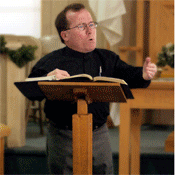Freedom At Alcatraz
Read: Philemon 1:4-16
I appeal to you for my son Onesimus, whom I have begotten while in my chains. —Philemon 1:10
A tour of the federal prison on Alcatraz Island in San Francisco Bay left me with some unforgettable images. As our tour boat pulled into the dock, I could see why this now-closed maximum-security federal prison was once known as “The Rock.”
Later, inside the legendary Big House, I stared at shafts of light coming through heavily barred windows. Then I saw row after row of cagelike cells that housed well-known inmates such as Al Capone and Robert Stroud, the “Birdman of Alcatraz.”
But another image made a deeper impression. Stepping into an empty cell, I saw the name “Jesus” scrawled on a wall. In another, a Bible lay on a shelf. Together they quietly spoke of the greatest of all freedoms.
Paul knew such liberty while waiting to be executed. Regarding himself as a “prisoner of Christ,” he used his incarceration to help other inmates discover what it means to be an eternally forgiven, dearly loved member of God’s family (Philem. 1:10).
Barred windows and doors represent one kind of confinement. Physical paralysis, inescapable poverty, and prolonged unemployment are others. Perhaps you endure another. None are to be desired—yet who would trade “imprisonment” with Christ for life “on the outside” without Him?
Later, inside the legendary Big House, I stared at shafts of light coming through heavily barred windows. Then I saw row after row of cagelike cells that housed well-known inmates such as Al Capone and Robert Stroud, the “Birdman of Alcatraz.”
But another image made a deeper impression. Stepping into an empty cell, I saw the name “Jesus” scrawled on a wall. In another, a Bible lay on a shelf. Together they quietly spoke of the greatest of all freedoms.
Paul knew such liberty while waiting to be executed. Regarding himself as a “prisoner of Christ,” he used his incarceration to help other inmates discover what it means to be an eternally forgiven, dearly loved member of God’s family (Philem. 1:10).
Barred windows and doors represent one kind of confinement. Physical paralysis, inescapable poverty, and prolonged unemployment are others. Perhaps you endure another. None are to be desired—yet who would trade “imprisonment” with Christ for life “on the outside” without Him?
My heart and soul imprisoned lay,
Not knowing Christ the Lord;
But since the day He set me free,
We live in one accord. —Hess
Not knowing Christ the Lord;
But since the day He set me free,
We live in one accord. —Hess
To be under Christ’s control is to have true freedom.











No comments:
Post a Comment